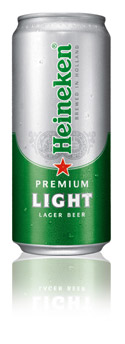MONDAY BEER LINKS, MUSING 08.04.14
The State of Beer (As Craig Gravina Sees It). Josh Bernstein kicked off this round of the “are there too many breweries?” discussion with an article headlined “America Now Has Over 3,000 Craft Breweries—and That’s Not Necessarily Great for Beer Drinkers” that drew 93 (maybe more by now) comments. Stephen Beaumont replied “No, There Aren’t Too Many Breweries in the United States” and backed that up with a bunch of math. Read ’em both and then set aside a little time to consider what Craig Gravina has to add (time because the post is about 1,200 words – a definite candidate for Pocket). Two excerpts, the first a quote from Sam Calagione at Dogfish head in Bernsteins’s article.
We’re heading into an incredibly competitive era of craft brewing. There’s a bloodbath coming.
Then from “The State of Beer.”
‘Craft’ in that sense, shares something in common with the Oscars. Films that are deemed ‘important’, or those that deal with important or serious issues like war or diseases, often win Academy Awards. They, like ‘craft’, are in fact quite the opposite of important. They are celluloid past time fillers. Beer is beer — craft or otherwise — it is not important, and those who make it are not significant. Is it enjoyable? Immensely.
I don’t agree on all counts, but there’s a lot in the post to think about.
[Via Drink Drank]
Pure, cheap and a bit dull – my rebuttal to commentary on The Economist article. Start with the Economist story and the comments it generated. Might be more comments there than you want to read, but the first page provides a sense of the reaction to the story. Then read Rory Lawton’s rebuttal. He’s got a dog in the hunt — he runs specialty events and provides advice/consultancy — but that doesn’t make him wrong. I think it is an overstatement to talk about the “many wonderful, authentic traditions that this great beer nation once (my emphasis) had” because you can still find a heck of a lot more traditional beers enjoyed in a traditional manner today in Germany than you could find in the United States 25 years ago. But the relentless march to commodify beer needs to be halted.
[Via Berlin Craft Beer]
Tree House Brewing Co. Finds Fertile Ground in Western Massachusetts. A feast of photos, but also a look inside another small brewery that has attracted more attention than you could have imagined not many years ago. Fact is that although The New York Times and Washington Post carried stories about New Albion Brewing 35 years ago it is better known today than it was then. Frank Prial didn’t write about drinkers lined up for beer at New Albion, as they sometimes do at Tree House. And I’ve never seen Jack McAuliffe quoted this was: “So I guess at this point it doesn’t particularly matter what we brew because we’ll sell out of it and sell out of it fast.”
[Via Good Beer Hunting]
Sierra Nevada Beer Camp was the best festival of the summer that nobody went to. No lines for Pliny the Elder and Supplication? That did not seem to be the case in Philadelphia.
[Via Westword]
The New Home of IPAs. I’m not in love with basing anything on lists from Rate Beer and Beer Advocate or any discussion of best IPAs that includes neither Bell’s Two Hearted Ale nor Firestone Walker Union Jack, but Carla Jean Lauter (The Beer Babe) offers serious analysis that makes a drinker reconsider some assumptions. And the data provides still more proof that hops travel better than hoppy beers.
[Via Medium]
 The question came up Wednesday if
The question came up Wednesday if